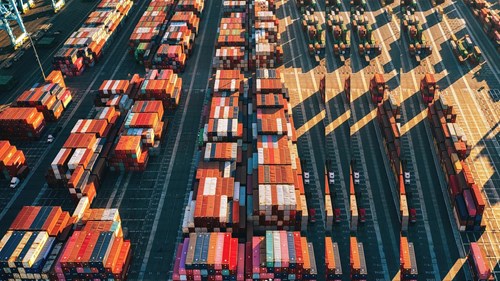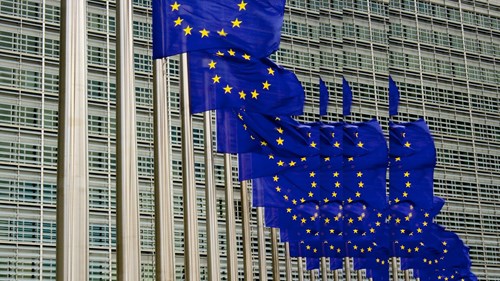Green light for CCS and CCU – German federal government presents key issues paper
The German federal government’s strategy for achieving its climate targets now has an additional component: following the announcement in January 2024 of a possible collaboration with Norway for the storage of CO2 off the Norwegian coast, the German government now intends to authorise the use of carbon capture and storage (CCS) and carbon capture and utilisation (CCU), i.e. the capture and storage or further use of carbon dioxide, in Germany as well. This is set out in the key points of the carbon management strategy and the bill to amend Germany’s Carbon Dioxide Storage Act (Kohlendioxid-Speicherungsgesetz), which is based on this strategy and which the Federal Ministry for Economic Affairs and Climate Action presented on 26 February 2024. The technology has already been trialled in other European countries for several decades. In its latest report, the Intergovernmental Panel on Climate Change also assumes that, in addition to other mitigation measures, CCS and CCU are a necessary climate protection technology in emission-intensive sectors with emissions that are difficult to avoid in order to meet the 1.5 degree target. Most recently, Germany’s industry association BDI and the German Trade Union Confederation, together with the environmental groups WWF and Nabu, called on the German government to authorise CCS in the seabed or on land and to develop a carbon management strategy. Now the German government is following suit and paving the way for establishing a technology that has long been controversial. Below, we outline the main aspects of the key issues paper and present the legal framework which companies now have to prepare for.
1. Areas of application of CCS and CCU
The key issues paper makes it clear that avoiding emissions remains the overarching goal. CCS and CCU are to be used as tools to reducing CO2 when it is difficult or impossible to avoid emissions in any other way. The areas of focus mentioned here are the cement and lime, basic chemicals and waste incineration industries. Obviously, CCS and CCU capacity will remain scarce even after the expansion now planned. However, this focus is unlikely to be seen as a ban on reducing other emissions (with the exception of emissions from coal-fired power plants) using CCS and CCU. We can therefore expect fierce competition for the capacity that will be available in the future.
As part of an open-technology transition to a climate-neutral electricity system, the plan is to enable the use of CCS and CCU for electricity generation plants as well, using gaseous energy sources and biomass. Operators of gas-fired power plants are therefore also likely to try to reduce their emissions by using CCU and CCS. However, the coal phase-out remains in place; access to CO2 pipelines is not permitted for emissions from coal-fired power plants.
To remove the current obstacles to using CCS and CCU in Germany, the German Carbon Dioxide Storage Act (Kohlendioxid-Speicherungsgesetz), which currently only provides for the testing and demonstration of the permanent storage of carbon dioxide in underground rock strata, will have to be amended. The bill now authorises carbon dioxide storage facilities in the exclusive economic zone or the continental shelf.
2. Subsidies for CCS and CCU
An incentive to use CCS and CCU is to be created by the CO2 price itself, namely if the use of the technology is cheaper than the emission allowances that would otherwise have to be purchased. However, the German federal government currently assumes that this incentive is not yet sufficiently available. The plan is therefore to introduce a funding module for CCS/CCU in the Federal Funding Guidance for Industry and Climate Protection in which the focus of government funding will be on emissions that are difficult or impossible to avoid.
This clearly shows the balancing act that the federal government faces: on the one hand, it wants to enable carbon dioxide storage in order to achieve climate neutrality; on the other hand, it wants to avoid the effect of diminishing efforts to reduce CO2 emissions. By excluding access to CCS or CCU for emissions from coal-fired power plants, the federal government makes it clear that the approval of CCS and CCU will not result in an extension of the lignite and hard coal era. However, it is noteworthy that conventional gas-fired power plants and biomass plants are to be expressly approved, even though funding for natural gas is excluded. This is meant to reflect the intended role of gas-fired power plants as a bridging technology, but nevertheless runs the risk of making the operation of gas-fired power plants even more attractive and thus slowing down the transition to green energy. It appears that the exclusion of funding for natural gas is intended to combat this undesirable effect.
This makes it clear that the storage or reutilisation of captured CO2 is not intended to weaken efforts to avoid emissions, but to complement them. At the same time, particularly emissions-intensive industrial sectors which have no other option for reducing emissions are to be given long-term prospects for keeping their business located in Germany.
3. Transport infrastructure for CO2
In addition to building the CCS/CCU plants themselves, building CO2 pipelines is very important. These pipelines will transport the captured CO2 as effectively as possible from the emission source directly to the CCS/CCU facility. This opens up new fields of activity for grid operators. To start building privately owned CO2 pipelines within a state regulatory framework, the German Carbon Dioxide Storage Act (Kohlendioxid-Speicherungsgesetz) is intended to be rapidly updated to reflect the proposals made by the German government in the analysis report from late 2022, thereby eliminating legal uncertainties in the application of the law. To date, missing and outdated references to the German Energy Industry Act (Energiewirtschaftsgesetz) have prevented a successful planning approval procedure.
As other EU countries are already more advanced in installing CCS plants, another aim is to export CO2. The necessary infrastructure will also have to be built, thus opening up opportunities for grid operators to collaborate with operators of foreign CCS plants. To this end, the amendment to the London Protocol to enable the export of CO2 for offshore storage is to be ratified and the necessary changes made to the German High Seas Contribution Act (Hohe-See-Einbringungsgesetz).
4. CO2 storage
The exploration of offshore storage sites in the German exclusive economic zone (EEZ) or the continental shelf will be enabled by law. If a location proves suitable, taking into account safety standards and environmental criteria, corresponding storage facilities can be developed for industrial use. However, carbon dioxide is not permitted to be injected into marine protected areas. This means the area that could theoretically come into consideration covers around 57% of the German North Sea area and around 49% of the German Baltic Sea area.
As marine areas are also required for the large-scale expansion of offshore wind power, CCS infrastructure will be integrated into comprehensive marine spatial planning. This could be done in such a way that suitable areas identified through exploration are then designated as CCS areas in marine spatial planning. Approval of CCS facilities is likely to be granted as part of a planning approval procedure including an environmental impact assessment.
The permanent storage of CO2 in the geological subsurface of the German mainland is still not permitted. As a result, the aforementioned transport infrastructure for CO2 must be built from the industrial regions to the coast, which raises the question of efficient implementation given the considerable logistical effort and expense involved. The federal government has signalled its willingness to create a legal basis in the German Carbon Dioxide Storage Act (Kohlendioxid-Speicherungsgesetz) that would allow individual federal states to opt into onshore storage upon request. However, it remains to be seen whether individual federal states will take the lead here – there is no information on this to date. In view of the public debates over recent years, it seems fairly unlikely anything will change fundamentally in the foreseeable future.
5. Summary and outlook
Overall, it remains to be seen what restrictions the legislative process will place on the use of CCS and CCU. The environmental requirements and the inclusion of gas-fired power plants in particular are likely to be controversial. As regards the construction of CO2 pipelines, operators of gas grids will closely observe the planning approval procedure including the planned environmental impact assessment. Operators of gas-fired power plants are likely to be interested in connecting to CO2 pipelines and thus to CCU plants, despite the lack of subsidies. As regards the industries specifically mentioned, in which emissions are difficult or impossible to avoid (lime and cement production, waste management, basic chemicals), the specific terms of the subsidies will be decisive. As for other, non-subsidised industries, whether the use of CCS/CCU makes economic sense will depend on the development of the CO2 price in relation to the costs of CCS/CCU technology and the expansion of capacity.




